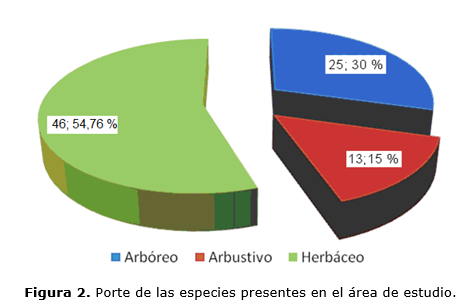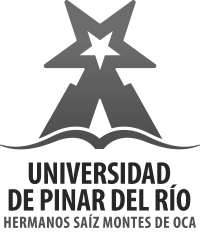Characterization of the structure and composition of a fragment of coastal area of the Popular Council Belic, municipality Niquero
Main Article Content
Abstract
Downloads
Article Details
References
Aguirre M. Z y Yaguana P. C. 2012. Universidad Nacional de Joda. Área Agropecuaria y Recursos Renovables. Carrera Ingeniería Forestal.
Bejerano, R. (1997). El análisis de la vegetación como criterio de interpretación del paisaje (Andalucía Atlántica). Estudios geográficos, 48, pp 226-233.
Bonet, A. 2002. Gestión de espacios protegidos. Universidad de Alicante. Departamento de Ecología. Materiales docentes. Alicante .España. 261 p.
Domínguez. G. M. M. 2011. Propuesta de manejo de las especies forestales y melíferas presentes en cuatro localidades del ecosistema cafetalero del municipio de Guisa. Provincia de Granma. Granma. 73 h. Tesis (en opción al título de Master gestión ambiental)-- Universidad de Granma.
Halfter, G. 2005. Significado Biológico de las Diversidades Alfa, Beta y Gamma. Monografías Tercer Milenio. Vol 4, S. E. A, Zaragoza, España. Pp: 5-18.
Magurran, A. E. 1988. Ecological diversity and its measurement.PrincetonUniversityPress, New Jersey, 179 pp.
Márquez C. G. Ecosistemas marinos. 2012. http://www.banrepcultural.org/blaavirtual/geografia/carcol/ecomar1.htm. [Consultado el 15 de octubre del 2013].
Mejía R J. Padilla M. J; Díaz G. R; Armenta. L & Acosta. T. 2000. Factores que podrían contribuir a la degradación del ecosistema del manglar.
Menéndez. L y Guzmán J. M. 2013. Los manglares del archipiélago cubano y el cambio climático. http://www.ipscuba.net/index.php?option=com_k2&view=item&id=8361:los-manglares-del-archipi%C3%A9lago-cubano-y-el-cambio-clim%C3%A1tico&Itemid=7. [Consultado el 22 de abril del 2014].
Menéndez. L. 2011. Los manglares en Cuba. Trabajadores. La Habana. http://www.ipscuba.net/index.php?option=com_k2&view=item&id=8361:los-manglares-del-archipi%C3%A9lago-cubano-y-el-cambio- clim%C3%A1tico&Itemid=7. [Consultado el 5 de febrero del 2014].
Moreno, C. 2006. Métodos para medir la biodiversidad. Editora de la UNAM. México, 78 pp.
Mostacedo, B. y Fredericksen, T. 2000. Manual de Métodos Básicos de Muestreo y Análisis en Ecología Vegetal. Santa Cruz, Ed: BOLFOR. 92 p.
Pérez, J ; Rosete, S ; Fernández, M ; Ricardo, E; Cejas, F; de Armas, Ch et al. Bosques de Cuba. Editorial Cinetífico-Técnica. Ciudada de La Habana, Cuba. 2011. Pp: 192.
Quintero, D. A. 2013. Confirman necesidad de medidas protectoras en franja costera. Diario Granma. La Habana. http://www.granma.cubaweb.cu / http://www.granma.cubasi.cu / http://granma.co.cu. [Consultado el 6 de febrero del 2014].
Ramírez. J. 2010 Los manglares. http://ponce.inter.edu/acad/cursos/ciencia/pages/manglares.htm. [Consultado el 15 de octubre del 2013].
Roig y Mesa, J. Diccionario botánico de nombres vulgares cubanos. 3ra reimpresión. Ciudad de La Habana: Editorial Científico-Técnica. 1988. p. 654-655.
Samón M. R. 2009. Propuesta de una estrategia de conservación para la vegetación de los cayos Real y Sijú, Cayos de San Felipe, Sector
Coloma-Las Canas. Pinar del Río, Cuba Tesis presentada en opción al título en Master en Ciencias Forestales. Mención “Manejo de Bosques”. Universidad de Pinar del Río.


